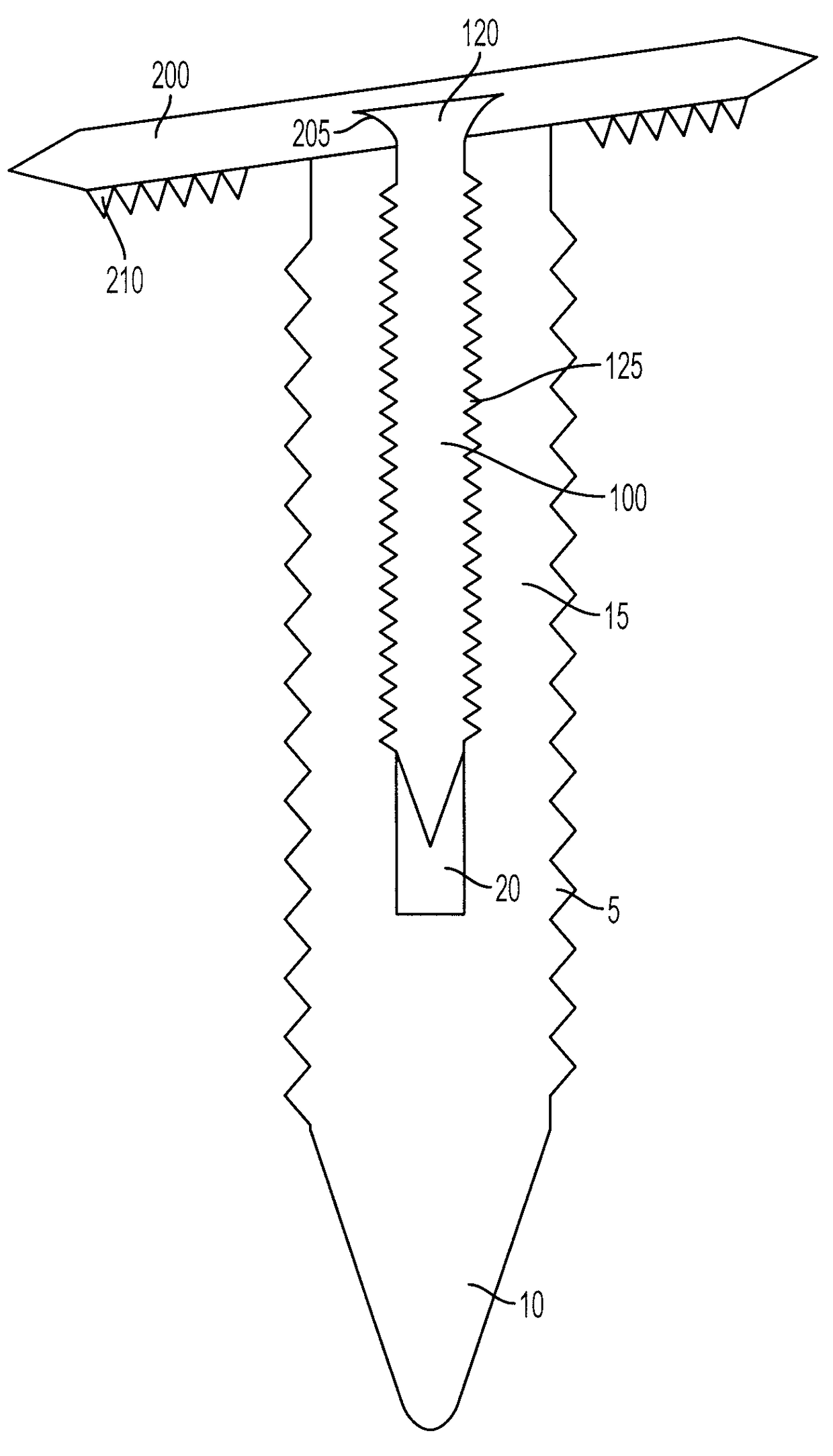Surgical screw and method of performing ligament reconstruction using said screw
a surgical screw and ligament technology, applied in the field of surgical screws, to achieve the effect of reducing patient discomfort and reducing the size of the fixation member
- Summary
- Abstract
- Description
- Claims
- Application Information
AI Technical Summary
Benefits of technology
Problems solved by technology
Method used
Image
Examples
example 1
ical Testing of a Prototype Fixation System
[0060]Methods:
[0061]A total of 26 porcine tibiae with bone mineral density obtained by quantitative CT were randomized to human tibialis anterior tendon fixation with Delta Screw (8), Intrafix (8), and Tritis (8) devices. Due to a limited number of prototypes, only two additional specimens were tested using the prototype fixation devices. The slippage for each specimen was evaluated during cyclical loading (10 to 250 N at 1 Hz for 500 cycles) followed by stiffness and ultimate strength determination in a load to failure test.
[0062]Results:
[0063]The mean slippage displacement measured after 500 cycles was similar for Delta Screw (1.42 mm±0.43); Intrafix (1.16 mm±0.32); and the prototype (1.61 mm±0.01). The Tritis implant demonstrated a statistically larger displacement (5.95 mm±3.86, p<0.001). More specifically, cyclical loading displacements were similar after 100 and 250 cycles, with the Tritis device exhibiting the largest slippage during...
PUM
 Login to View More
Login to View More Abstract
Description
Claims
Application Information
 Login to View More
Login to View More - R&D
- Intellectual Property
- Life Sciences
- Materials
- Tech Scout
- Unparalleled Data Quality
- Higher Quality Content
- 60% Fewer Hallucinations
Browse by: Latest US Patents, China's latest patents, Technical Efficacy Thesaurus, Application Domain, Technology Topic, Popular Technical Reports.
© 2025 PatSnap. All rights reserved.Legal|Privacy policy|Modern Slavery Act Transparency Statement|Sitemap|About US| Contact US: help@patsnap.com



